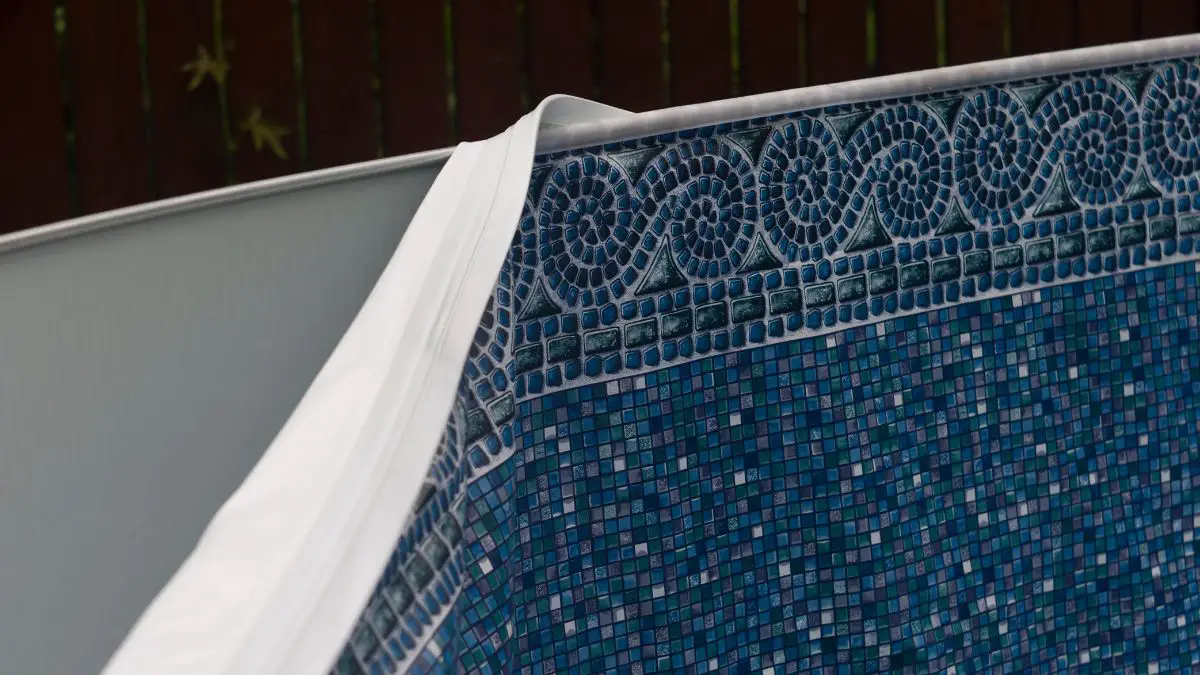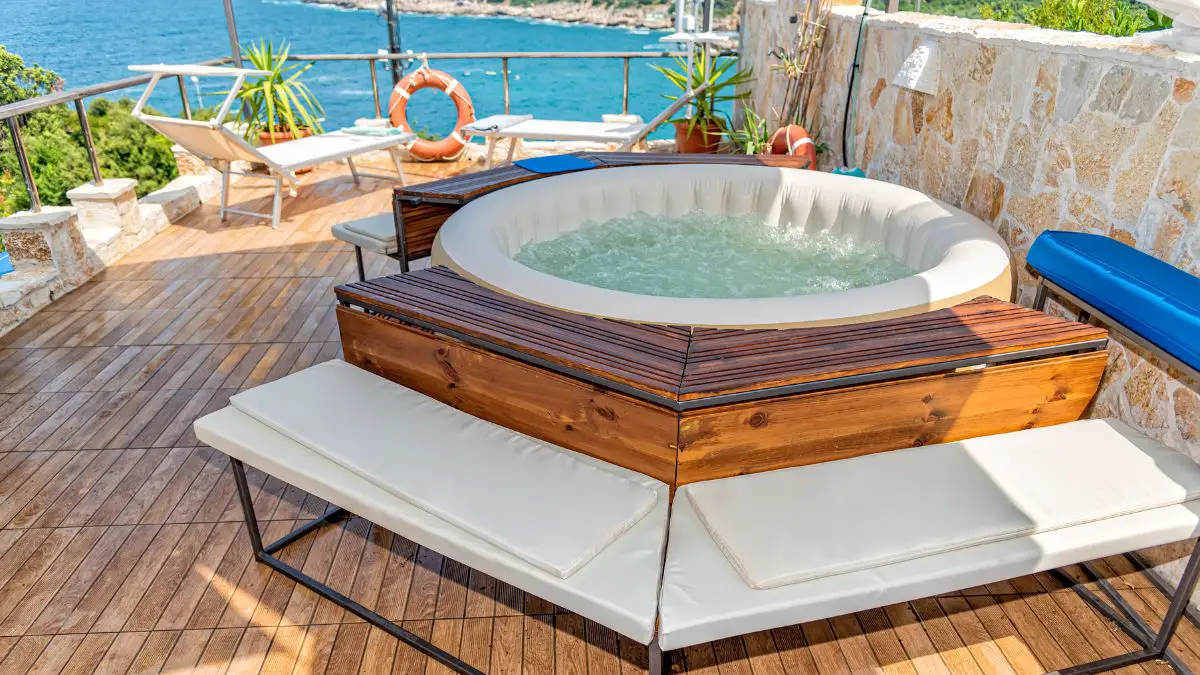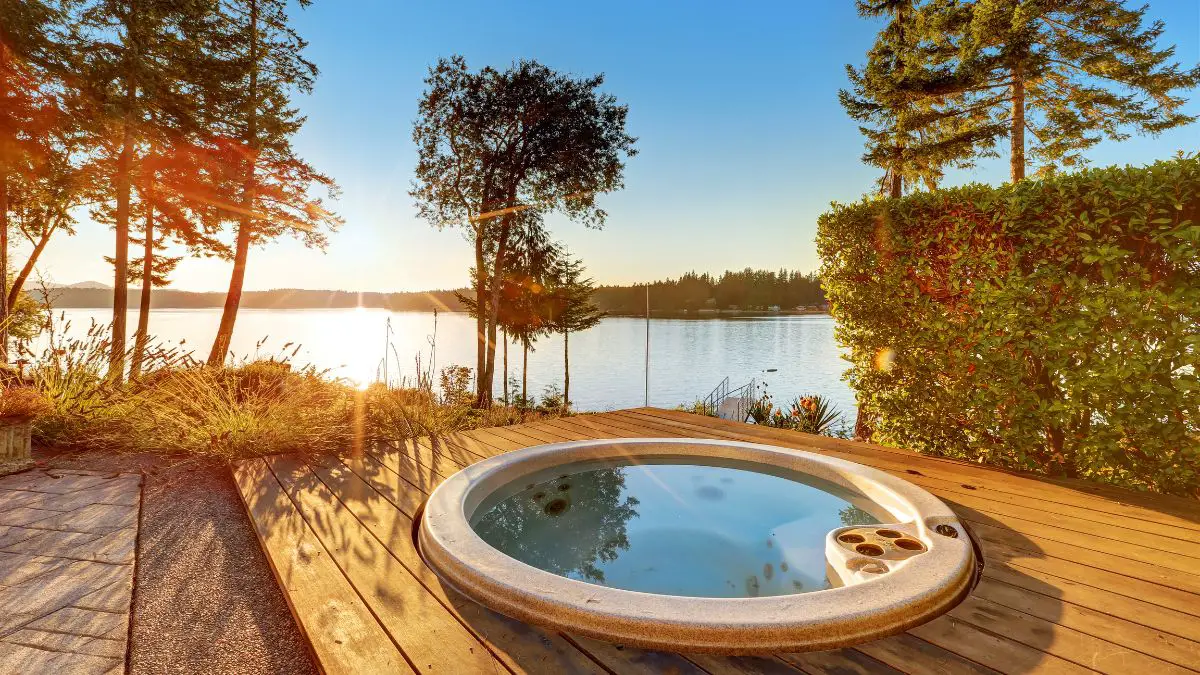Keeping your pool pristine is no small task, but it’s a crucial one. Imagine diving into crystal clear water, free from dirt and algae. That’s the reward of diligent pool maintenance. Cleaning the bottom of your pool is a key part of this process. It’s not just about aesthetics; it’s about the health and safety of everyone who takes a dip.
Keeping your pool clean involves regular brushing, vacuuming, and use of pool chemicals. To clean the bottom, dislodge dirt and algae with a pool brush, then vacuum or use a pool net to remove the debris. Finally, apply a pool shock treatment to sanitize the water, ensuring a safe and enjoyable swimming experience.
You’ve likely encountered a few common problems while cleaning bottom of pool. Algae stubbornly clinging to the surface, sediment settling in corners, or fine dirt that seems impossible to remove without a vacuum.
Whether you’re dealing with an above-ground pool or an in-ground one, whether you have a pool vacuum or not, there are ways to ensure your pool bottom is as clean as a whistle. From manual pool cleaning to automatic pool cleaning, from using a pool brush to applying pool chemicals, you have a variety of tools and methods at your disposal.
In this article, we’ll guide you through the process of cleaning the bottom of your pool, tackling common problems, and providing practical tips. Let’s dive in and transform your pool maintenance routine!
| Description |
|---|
| The type of pool (above-ground or in-ground) influences the choice of pool cleaner. |
| Larger pools may benefit more from automatic pool cleaners to save time and effort. |
| If you prefer less hands-on maintenance, automatic cleaners like robotic pool cleaners are ideal. |
| Manual brushing is a cost-effective method suitable for small above-ground pools and spas, but it is labor-intensive. |
| Handheld pool vacuums are self-contained appliances that work much like a household floor vacuum. They are affordable and easy to use, but require manual operation. |
| Automatic suction vacuums operate much like a whole-house central vacuum system. They are easy to use and durable, but use more electricity than manual options. |
| Pressure pool vacuum cleaners operate much like suction-side vacuums but are equipped with their own filter bag. They are good for collecting large debris but are more expensive than suction systems. |
| Robotic pool cleaners are powered independently of the swimming pool circulation system and place no extra load on the pool’s filter. They are easy to use but are the most expensive automatic cleaner. |
| In-floor vacuum systems offer entirely automated cleaning. They are the most expensive system and must be included during construction. |
| While budget is a factor, the type of pool, its size, and your tolerance for maintenance tasks are usually more important considerations when choosing a type of pool cleaner. |
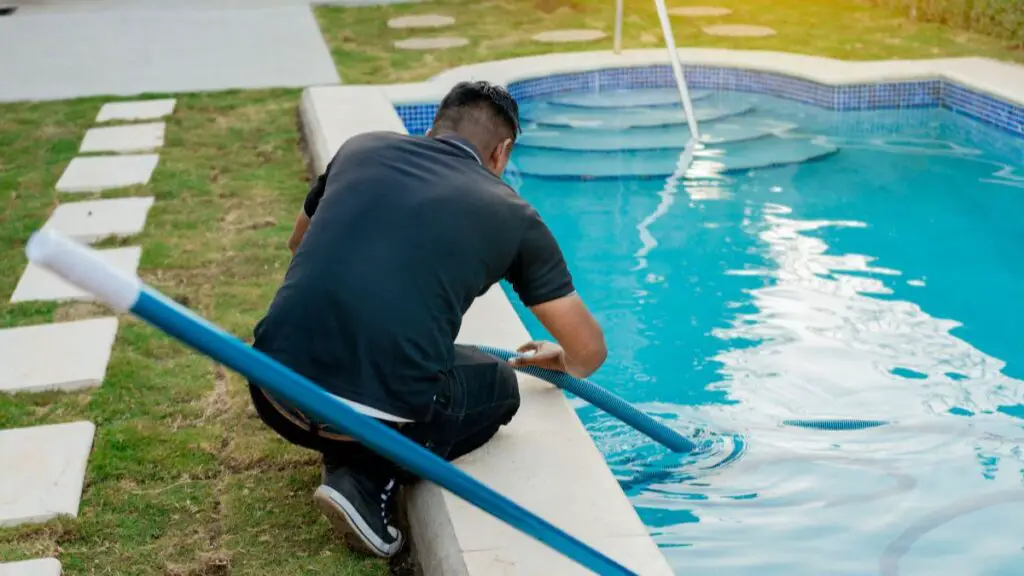
Understanding the Pool Cleaning Process
Diving into pool maintenance, you’ll encounter three main components: pool vacuums, brushes, and chemicals. Each plays a unique role in maintaining a clean and sparkling pool.
Pool Vacuums
Pool vacuums are the underwater equivalent of your household vacuum cleaner. They efficiently suck up dirt, debris, and sediment that settle at the bottom of your pool. You might question, “how to remove dirt from the bottom of the pool without a vacuum?” or “how to get fine dirt out of the pool without a vacuum?” While it’s possible to clean your pool without a vacuum, using one can make the process much more efficient and thorough.
Pool Brushes
Regular brushing is a crucial yet often overlooked part of pool maintenance. A good pool brush can dislodge stubborn algae and dirt from your pool surfaces, including the bottom. This is especially important when dealing with issues like algae at the bottom of the pool. A pool brush is also your best ally when trying to clean the bottom of a pool without a pump.
Pool Chemicals
Pool chemicals, such as chlorine and algaecides, are the secret weapons in your pool cleaning arsenal. They help sanitize your pool water and prevent algae growth, playing a vital role in maintaining the overall health and cleanliness of your pool.

Different Types Pool-Cleaning Systems
Manual Brushing
Best for
- Small above-ground pools and spas; spot cleaning of any pool.
Manual brushing is a cost-effective and straightforward method for maintaining small above-ground pools and spas. With a good filtration system, you can remove debris, stains, and even green algae and yellowish algae using brushes and skimming nets attached to a telescoping pole. This method allows you to reach the deepest parts of the pool to scrape and brush off stains and algae from the sides and bottom, then use a skimming net to remove floating debris.
Pros
- Least expensive option
- Good for above-ground pools
- Allows for deep, thorough cleaning
Cons
- Labor intensive
- Must be done frequently
- May cause pool filtration system to need more frequent backwashing.
Handheld Pool Vacuum
Best for
- Any type of pool.
Handheld pool manual vacuums are self-contained appliances with bristle/suction heads, a built-in filter, a debris-trapping compartment, and a long handle. They work much like a household pool floor vacuum and are available in both plug-in and battery-operated types.
Pros
- Least expensive mechanical option
- More powerful than many automatic systems
- Doesn’t require entire pool to have a filtration system
Cons
- Requires manual vacuum operation; doesn’t work automatically
- Thorough cleaning can take several hours
- May force more frequent backwashing of pool’s filtration system
Automatic Suction (Suction-Side) Vacuums
Best for
- In-ground pools.
Automatic suction or suction-side vacuums operate much the same way as a whole-house central vacuum system does. The unit is connected to the filtration system’s water intake with a flexible pool hose, usually at a fitting found at the skimmer basket.
Pros
- Low cost compared to other automatic pool cleaner
- Easy to use and maintain
- Durable and long-lasting
Cons
- Uses more electricity than manual options
- No internal filter; dumps debris into pool’s filtration system
- Requires a pool with a filtration system, running during operation
Pressure Pool Vacuum
Best for:
- Pools that experience a lot of debris.
Also known as pressure-side cleaners, these cleaners operate much like suction-side vacuums, also using the pool’s filtration pump to provide the power. But this type is equipped with its own filter bag, so it doesn’t place any added load on the pool’s filter.
Pros
- Has internal filters; doesn’t clog pool’s filtration system
- Good for collecting large debris
- Easy to clean and maintain
Cons
- More expensive than suction systems
- May require booster pump to work effectively
- Requires pool to have filtration pump, operating during cleaner use
Robotic Pool Cleaner
Best for
- Any pool type.
Robotic pool cleaners are powered independently of the swimming pool circulation system and place no extra load on the pool’s filter. They have their own motors that both propel the unit around the pool and pump water through the unit to filter it.
Pros
- Self-filtering; does not increase load on pool filtration system
- Easy use; no pool pump connections required
- Some types are programmable
Cons
- Most expensive automatic cleaner
- Many moving parts; more likely to need maintenance
- Unit’s filters need frequent cleaning
In-Floor Vacuum System
Many of the more luxurious in-ground swimming pools have in-floor automatic vacuum systems, which are installed during the construction process. Jets are built into the bottom of the pool and connected to the filter system’s return line.
Pros
- Cleaning is entirely automated
- Little to no maintenance required, other than filter cleaning
Cons
- Most expensive system
- Must be included during construction; can’t be added on

Step-by-Step Guide to Cleaning the Bottom of Your Pool
Step 1: Pre-Wash Everything You Can
Before you dive into the deep end of pool cleaning, take a moment to pre-wash everything you can. This includes pool toys, ladders, and any removable parts. By doing this, you’re eliminating potential sources of lots of dirt and algae, making the rest of the cleaning process smoother and more effective.
Step 2: Brushing the Pool
Now, it’s time to get physical. Grab your pool brush and start scrubbing. Brushing the pool helps to dislodge stubborn dirt and algae, making it easier to remove later. Pay special attention to corners and crevices where dirt and algae love to hide. Remember, brushing is essential, whether you’re dealing with an algae-infested pool bottom or just performing regular maintenance.
Step 3: Using a Pool Vacuum Cleaner
After brushing, it’s time to bring out the big guns: your pool vacuum. This tool is your best bet for removing the dirt and debris that you’ve dislodged with your brush. If you’re wondering how to get dirt off the bottom of the pool without a vacuum, don’t worry. There are manual pool cleaning methods, like using a pool net or a pool pump, that can also do the job. However, a pool vacuum can make the process much more efficient.
Step 4: The Shocking Solution
Once you’ve vacuumed up all the visible dirt and debris, it’s time for a shocking solution. Pool shock is a type of pool chemical that kills bacteria and algae, and it’s a crucial step in the pool cleaning process. After shocking your pool, you’ll need to let it sit for a while to allow the chemicals to do their work. This is a great time to take a break and let the pool shock do the heavy lifting.
Step 5: Repeat the Process
Pool maintenance is not a one-and-done deal. It requires regular care and attention. So, after you’ve shocked your pool, it’s time to repeat the process. Go back to brushing, vacuuming, and shocking as needed. Regular maintenance will keep your pool in top shape and prevent problems like algae and dirt buildup from getting out of hand.
Step 6: Final Shock and Assessment
After repeating the cleaning process, it’s time for one final shock and assessment. This last shock treatment will ensure that any lingering bacteria or algae are eliminated. After this, take a good look at your pool. If it’s crystal clear and free of dirt and debris, congratulations! You’ve successfully cleaned the bottom of your pool. If not, don’t worry. Pool maintenance is a learning process, and with time and practice, you’ll become a pro.
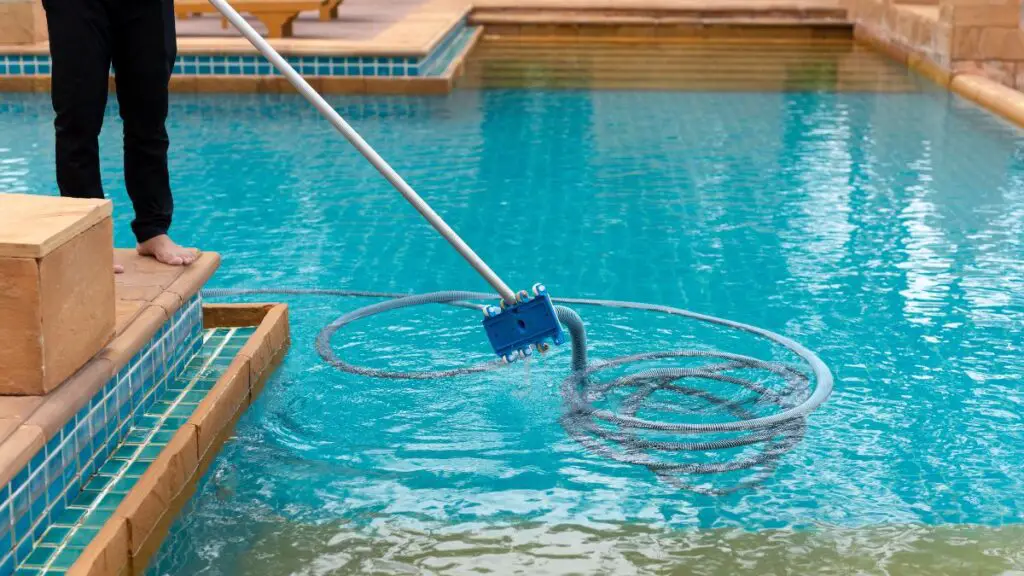
How to Clean the Bottom of a Pool Without a Vacuum
Cleaning the bottom of a pool without a vacuum might seem like a daunting task, but with the right tools and techniques, it’s entirely achievable. Let’s explore how you can keep your pool spotless using brushes, manual cleaning tools, and pool filters.
Using Brushes and Manual Cleaning Tools
Firstly, you’ll need a good pool brush. This simple tool is your first line of defense against dirt and algae. Start by brushing the sides and bottom of your pool, focusing on any areas where dirt and debris tend to accumulate. This process helps to dislodge the dirt, making it easier to remove.
Next, consider using a pool net or leaf skimmer. These manual cleaning tools can be used to scoop up larger pieces of debris. While they might not be as efficient as a pool vacuum for removing fine dirt, they’re excellent for tackling leaves, bugs, and other larger debris.
The Role of Pool Filters
Pool filters play a crucial role in keeping your pool clean. They work by water circulation and filtering out dirt and debris. While a pool filter might not remove all the dirt from the bottom of your pool, it can significantly reduce the amount of cleaning you need to do.
To maximize the effectiveness of your pool filter, make sure to clean and maintain it regularly. A clogged or poorly functioning filter won’t do its job effectively, so regular maintenance is key.
In conclusion, while a pool vacuum can make the task of cleaning the bottom of your pool easier, it’s not the only tool at your disposal. With a good pool brush, a reliable pool net, and a well-maintained pool filter, you can keep your pool looking its best, even without a vacuum.
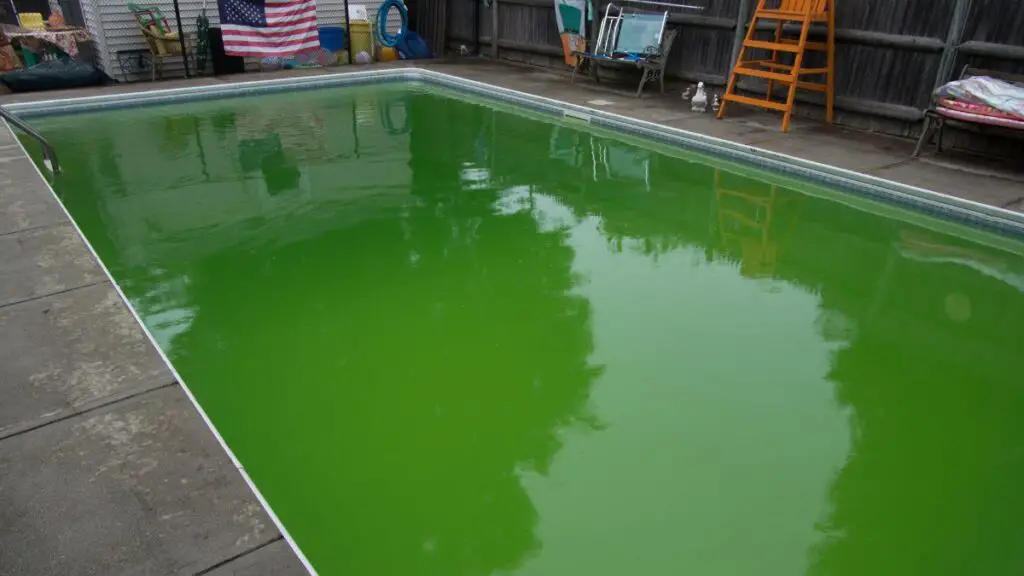
Dealing with Specific Problems
Maintaining a clean pool often involves tackling specific problems. Let’s dive into how to handle three common issues: removing algae from the pool bottom, dealing with sediment and dirt, and cleaning after draining the pool.
Removing Algae from the Pool Bottom
Algae in the bottom of the pool can be a stubborn problem. These pesky organisms love to cling to pool surfaces, turning your beautiful pool into a green mess. But don’t worry, with the right approach, you can banish algae from your pool.
Start by brushing the pool bottom vigorously. This helps to dislodge the algae, making it easier to remove. Next, use a pool vacuum or a pool net to scoop up the dislodged algae. If you’re wondering how to clean algae from the bottom of the pool without a vacuum, a pool net can be a good alternative method.
Finally, apply a pool shock treatment. This will kill any remaining algae and prevent new growth. Remember, regular pool maintenance is key to preventing algae blooms, so keep up with your pool cleaning schedule.
Dealing with Sediment and Dirt
Sediment and dirt can make your pool look cloudy and uninviting. To tackle this issue, start by brushing the pool bottom to dislodge the dirt. Then, use a pool vacuum to suck up the dirt and sediment. If you’re trying to figure out how to get fine dirt out of the pool without a vacuum, a pool filter can help. It won’t remove all the dirt, but it can significantly reduce the amount.
After vacuuming or filtering, apply a pool shock treatment to sanitize the water. If your average pool is still looking cloudy after this, you might need to use a pool clarifier. This product helps to clump together fine particles, making them easier to remove.
Cleaning After Draining the Pool
Cleaning after draining the pool can be a big task, but it’s also an opportunity to give your pool a thorough clean. Start by brushing and scrubbing the pool surfaces to remove any stubborn dirt or algae. Then, use a pool net to remove any larger debris.
Once the pool is clean, it’s time to refill it. As the pool is filling, add the necessary pool chemicals to balance the water clean. This includes chlorine, pH adjusters, and a pool shock treatment. Once the pool is filled and the chemicals are balanced, your pool should be sparkling clean and ready for use.
Remember, dealing with specific problems is part of pool maintenance. By tackling these issues head-on, you can keep your pool looking its best.
FAQs About Cleaning Bottom of Pool
What’s the best thing to clean the bottom of a pool?
The best tool for cleaning the bottom of your pool largely depends on the specific issues you’re dealing with. However, a combination of a pool vacuum, a pool brush, and pool chemicals usually does the trick. The vacuum sucks up dirt and debris, the brush dislodges stubborn dirt and algae, and the chemicals sanitize the water and prevent algae growth.
How do I get sediment off the bottom of my pool?
To remove sediment from the bottom of your pool, start by using a pool brush to stir up the sediment. Then, use a pool vacuum to suck up the sediment. If you’re dealing with fine sediment, a pool filter or a pool clarifier can also help.
How do I get dirt and algae off the bottom of my pool?
To remove dirt and algae from the bottom of your pool, start by brushing the pool bottom to dislodge the dirt and algae. Then, use a pool vacuum or a pool net to remove the dislodged material. Finally, apply a pool shock treatment to kill any remaining algae and sanitize the water.
How do I clean the bottom of my pool without emptying it?
Cleaning the bottom of your pool without emptying it involves a combination of brushing, vacuuming, and applying pool chemicals. Start by brushing the pool bottom to dislodge dirt and algae. Then, use a pool vacuum to remove the dislodged material. If you don’t have a pool vacuum, a pool net or a pool filter can also help. Finally, apply a pool shock treatment to sanitize the water.
Conclusion
You’ve embarked on a journey through the ins and outs of pool maintenance, and you’ve learned just how crucial it is to keep the bottom of your pool clean. From the importance of regular brushing and vacuuming to the power of pool chemicals, you now have the knowledge to tackle any pool cleaning challenge that comes your way.
Remember, dealing with algae, sediment, and dirt is part of the process. Whether you’re using a pool vacuum or opting for manual pool cleaning methods, consistency is key. Regular maintenance not only keeps your pool looking its best, but it also ensures a safe and enjoyable swimming experience for everyone.
As a final piece of advice, don’t be afraid to seek help if you need it. Whether it’s consulting a pool cleaning guide, investing in a pool cleaning service, or upgrading your pool cleaning tools, there are plenty of resources available to assist you.
So, roll up your sleeves, grab your pool brush, and dive into the rewarding task of pool maintenance. With your newfound knowledge and a bit of elbow grease, you’ll have a sparkling clean pool that’s the envy of the neighborhood. Happy cleaning!



